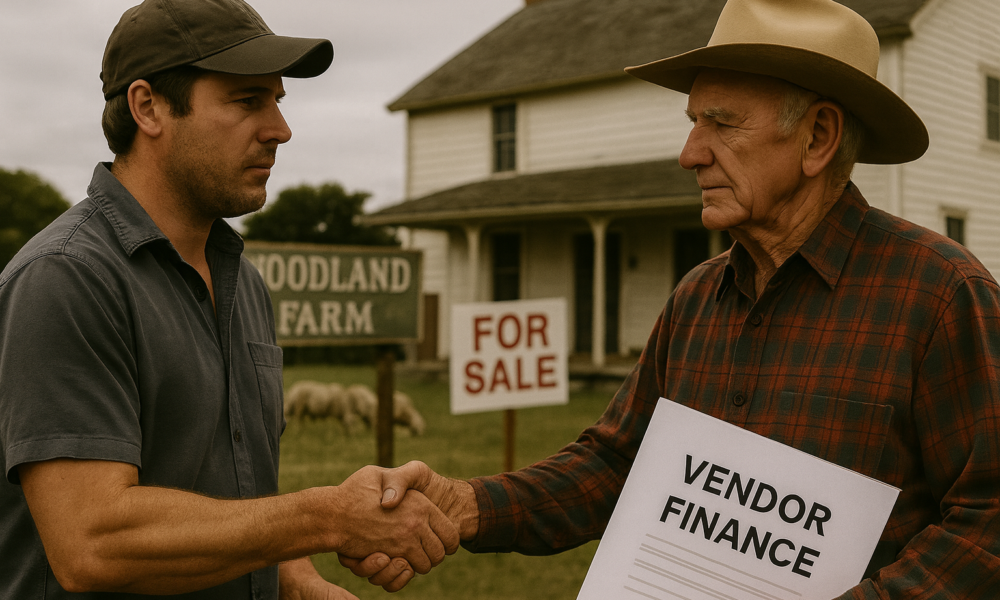Vendor Finance

Independent Contributor
Once upon a time…..before big banks and after warlords and monarchies ruled the world, farm real estate transactions often involved vendor finance where effectively the vendor is the bank or one of the financiers.
In 1972 my parents brought an 800-acre sheep and beef property in Southland, NZ. They had $15,000 between them to buy the property and livestock for $150,000 (Ewes were $6). The Rural bank provided half the debt funding and the vendor provided the other half through a ‘second mortgage’. Unbelievably the government at the time guaranteed the second mortgage leaving the vendor with no risk.
Through the 90’s and early 2000’s the money literally poured out of the big banks and whilst they didn’t lend down to 10% equity as above, 30-40% security was deemed acceptable. Then the big squeeze came on banks own funding criteria and the flow stopped for periods, actually allowing some Chinese and North American pension money to flow into Australian and NZ farming with them basically able to fund their own debt.
Nowadays vendor finance is popping up more and more, sometimes just the narrative around it enough to stimulate bank interest/motivation. Often involved professionals disguise it in ‘lease to own’ or ‘staged settlements’, but it can be the best way to transition likeminded family members or finance savvy young farmers into what are effectively capital heavy farm businesses.
One example recently is a 800-acre dairy farm worth circa $10 mil with 600 cows, the purchaser offered to buy the cows and a 200-acre title for $3.2 mil and cheekily asked to settle the rest in 4-years time at today’s price, paying a finance rate disguised as a lease of circa 2% on the rest. After 2 years on the market and sick of milking the vendor negotiated to a middle ground accepting the offer with a 2-year settlement.
In situations where legacy is a factor and vendor debt at a manageable level, vendor finance provides a real succession planning alternative and really does provide the stimulus and managed risk appetite to transition the next generation in to farm ownership. At a corporate level in large transaction’s it’s common to stage settlement where 50-75% is paid up front at takeover and the rest paid at agreed intervals with different titles secured on the first and second mortgages.
The biggest winners in agriculture since before Christ have been those who have been highly geared through high CAGR (Compound Annual Growth Rate) years where the debt is diluted by farm values rising. Hence if you don’t have the comfortable 50-60% deposit and are a proven operator why not explore options of getting in with lower equity???
